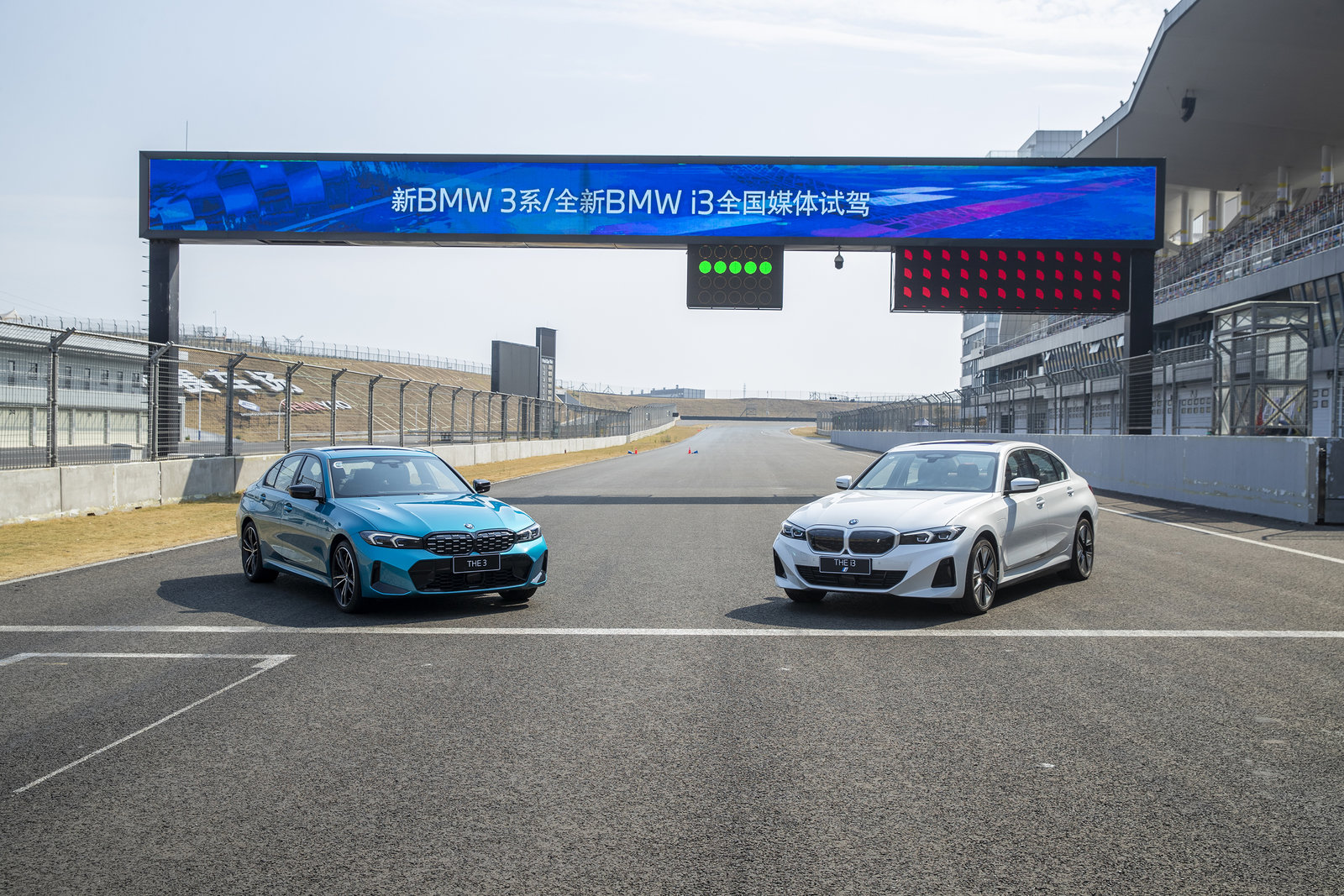From the award-winning BMW 2002 to the million-selling first-generation BMW 3 Series E21; from the pinnacle of power and handling matching in the F30 3 Series to the mature and luxurious G20 3 Series, the BMW 3 Series has always been synonymous with “sport”. The most important product in this BMW product line has also received high praise from car fans and friends — “young people cannot avoid a BMW 3 Series”.
However, when we evaluate the BMW 3 Series, we always mention the smooth and smooth power output of the B48 engine, saying that ZF’s 8AT shift is sharp, and saying that the source of pleasure comes from the seamless matching of the engine and gearbox. But imagine a problem: if there is no B48 engine and no powerful 8AT, does this 3 series still have a soul?
Believe me, in the era of electrification, BMW itself is also considering such issues. With the launch of the i3, the BMW 3 series without internal combustion engines and gearboxes has also arrived.
This time, we came to the Zhuzhou International Circuit in Hunan to find the answer to the above questions in a highly free driving experience.
Track experience
Fans should not be unfamiliar with the Zhuzhou International Circuit. Zhuzhou International Circuit is 3.77 km long, with 9 left turns and 5 right turns. The standard width is between 12 and 19 meters, and the height difference is 25.9 meters. It is also the first international racing circuit in China with an oval-shaped track, the largest horizontal slope, and the largest drop.
At a track day organized by BMW, but you cannot hear the roar of the engine, this is a wonderful experience. Simply reviewing the power parameters of the BMW i3: The BMW i3 we test drive is eDrive 35 L, using a rear-mounted excitation synchronous motor, with a maximum power of 210 kW, a maximum torque of 400 N·m, and an official acceleration time of 6.2 seconds per 100 kilometers.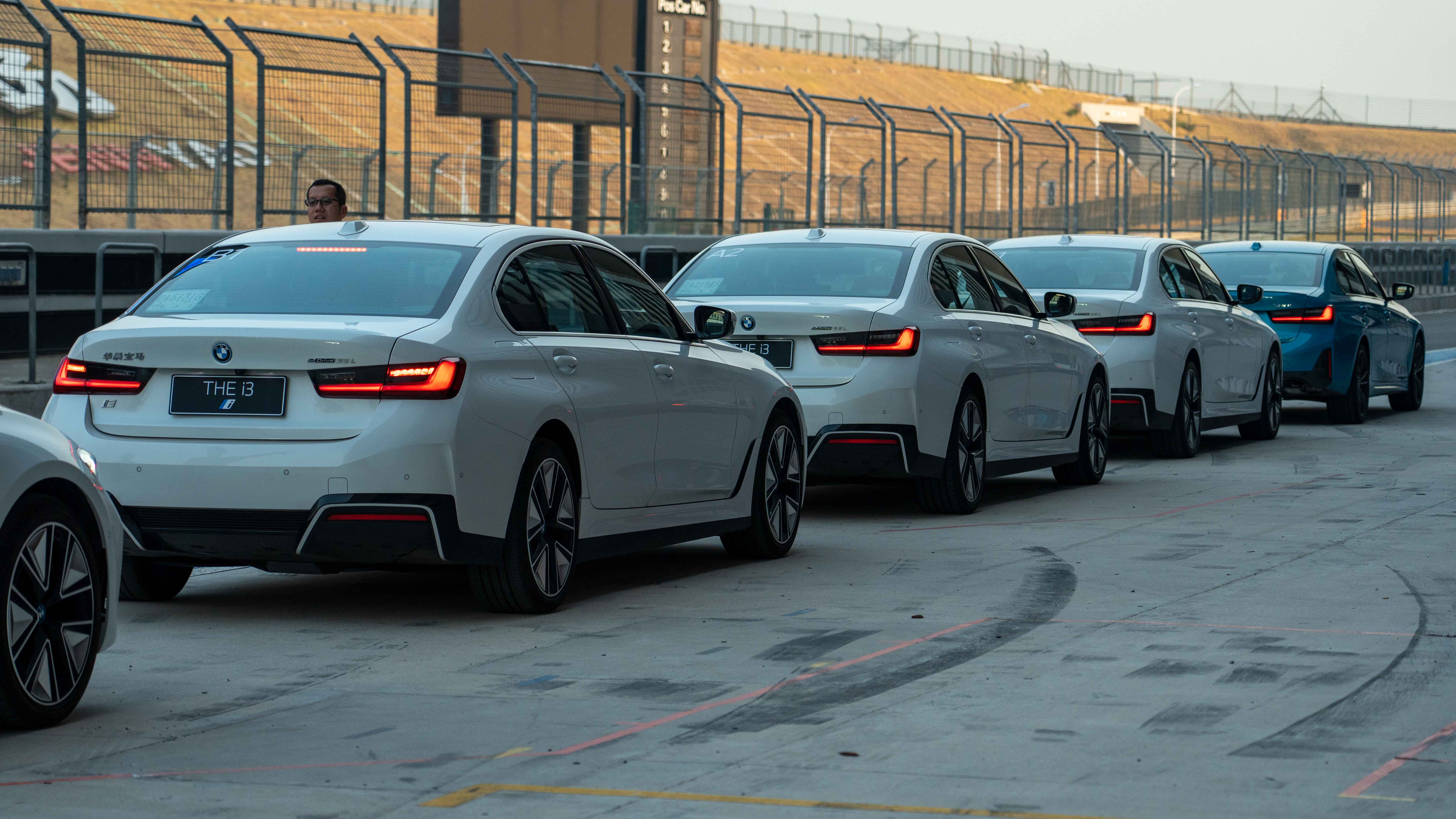
Does 6.2 seconds of acceleration sound lackluster to you? Some friends might scornfully say that this kind of acceleration is not much different from the 6.3 seconds of the 330 Li acceleration, it’s just purely “electric for the sake of being electric”.
But after test-driving it, I can responsibly say that the driving experience of the i3 is very different from that of a fuel-powered 3 Series and even more fun.
Electric, yet still a joyful 3 Series
Starting from the basic driving experience, comparing to the pure electric models that can now easily achieve 3-4 seconds of acceleration, the 6.2 seconds of acceleration of i3 indeed lacks a selling point, but the sensory stimulation it provides is not inferior to these competitors.
In terms of throttle tuning, the power release curve of the BMW i3 is evenly linear, and the power characteristics output by the motor make this car’s sense of acceleration even stronger than that of performance cars like the M3. Combined with the typical German carmaker’s slightly heavy-footed feeling, the power output of the i3 gives people a deep, textured feeling.
What’s even more interesting is the exclusive sound wave design created by composer Hans Zimmer and BMW. The in-car sound system follows the driver’s foot pedals to create an atmosphere. Compared to the “childish approach” of some car companies that add traditional V8 engine sound to electric cars, the sound effect of i3 adds the high-pitched sound of the electric motor and a sound resembling that of a spacecraft, which is unique and cinematic. I personally really like this design, and i3 sets an example for creating a better in-car environment for other electric car companies.
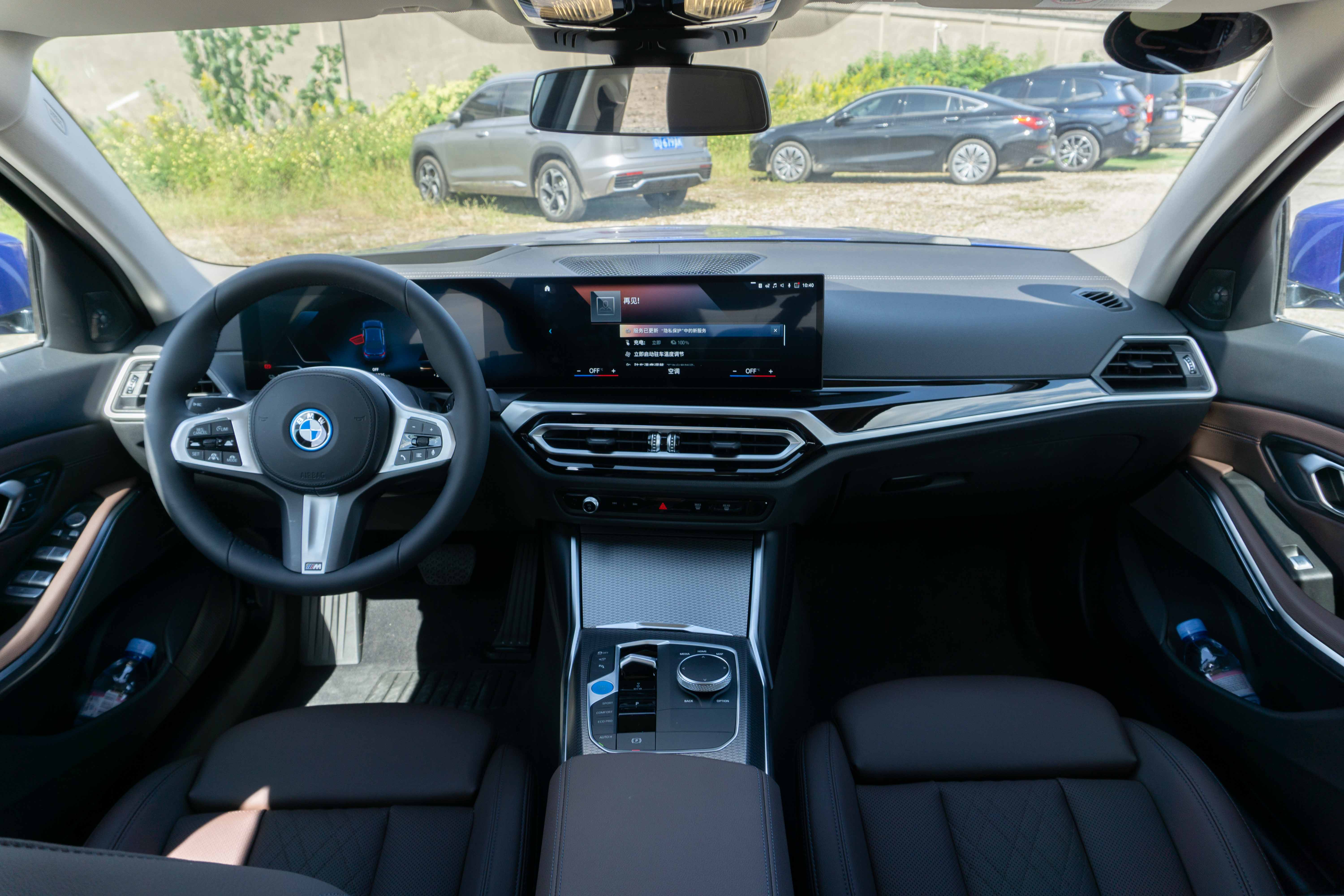 Before the track segment, coaches select several representative corners to provide targeted driving advice. U-turn corners, combined turns, and fake turns, BMW still confidently treats the corners as its home field.
Before the track segment, coaches select several representative corners to provide targeted driving advice. U-turn corners, combined turns, and fake turns, BMW still confidently treats the corners as its home field.
In the U-turn corner, the test is on the responsiveness of the vehicle’s suspension, the stability of the front and rear axles, and the ability to accelerate and brake. On the straight road, step on the accelerator pedal with the roar of sound effect, and the speed quickly passes 100 km/h. At the end of the straight road, step on the brake pedal hard. The i3’s brakes are very solid, and there is no skidding even if it is fully stepped on.
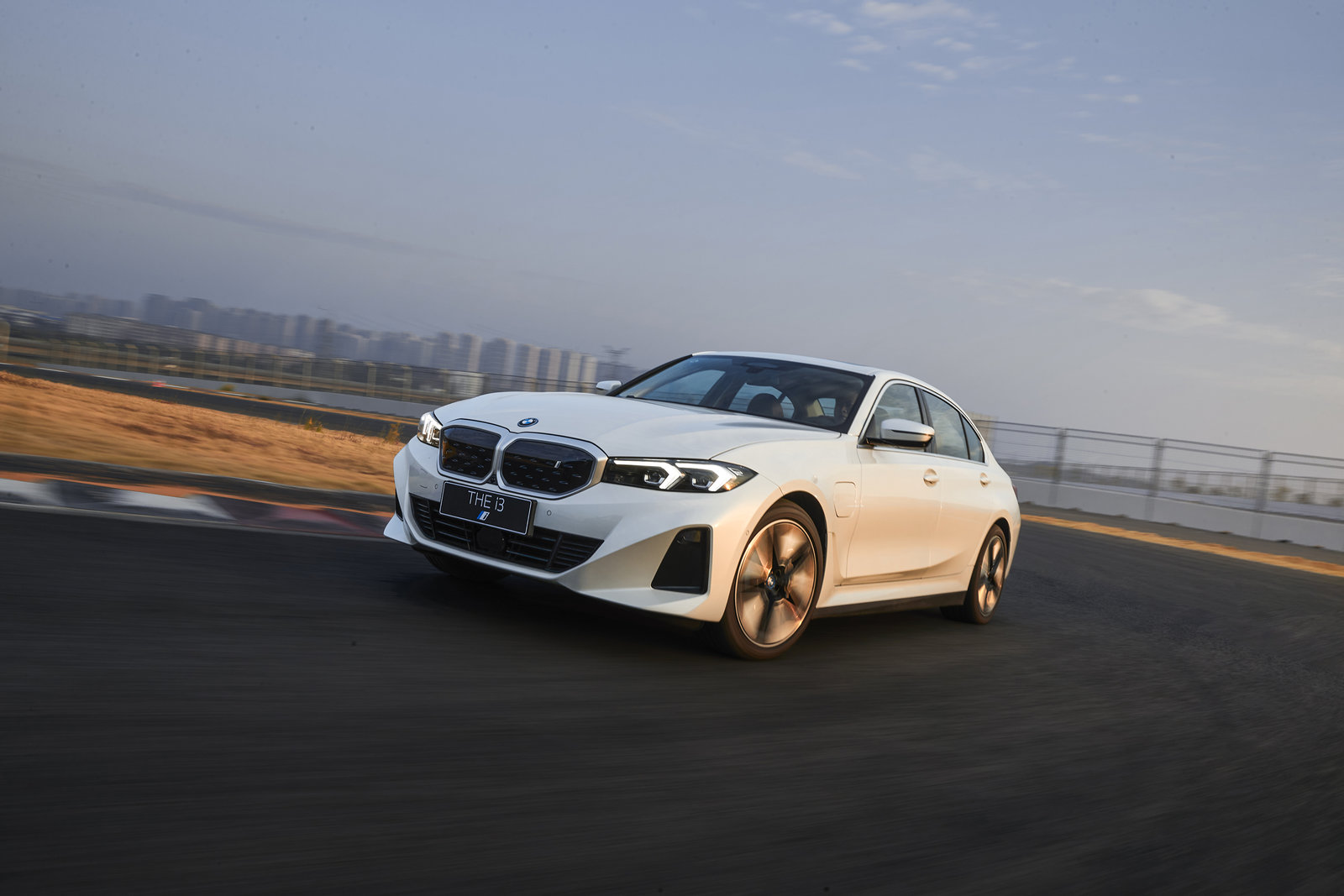
The most interesting thing is the dynamic characteristics of this car. For a pure rear-wheel-drive model with a maximum power of 210 kW and a maximum torque of 400 N·m, the most worrying thing is that it will “oversteer” in corners. Therefore, when I first drove the i3, I still retained a bit of awe.
But the fact proves that I was overthinking. The dynamic characteristics of this rear-wheel-drive BMW are designed to be “neutral” and slightly “pushy” style, and the cornering performance is very stable. On the one hand, this is because the wheelbase of the i3 is wider than that of the fuel version of the 3 Series, which is the key to improving stability. On the other hand, the i3’s front wheel size is 225/50, and the rear wheel size is 245/45, so the wide rear wheels can completely hold the power output.
In “Combination Bend”, the vehicle’s steering response is tested. The steering of the i3 has not been tuned to the sensitive style of the Model 3, which is almost like a “bicycle handlebar”, but is closer to the overall feel of the fuel-burning 3 Series. The transmission of road feel has been retained, and the feel is still as smooth as cutting butter.
The addition of the large battery pack caused the i3’s curb weight to exceed two tons, but the feedback in combination corners was not sluggish. The addition of a rear adaptive suspension system makes the rear of the car look less sluggish. When the car exits the curve, the line is relaxed, and when the car is rolled over the shoulder of the road, the vehicle does not bounce madly. After the ups and downs, the wheels are still tightly biting the ground. Such performance also made me more daring in driving on the track and continually pushing the limits of this car.
Let’s drift
After experiencing the dynamic feeling of the track, the coach drove the car to an open area. Now it’s time for the drifting section.
BMW seems to care a lot about its “reputation” in the era of electric driving. In the past, almost every BMW model would show off its drifting skills, and rear-wheel drive BMWs almost regarded whether they could drift as their label.
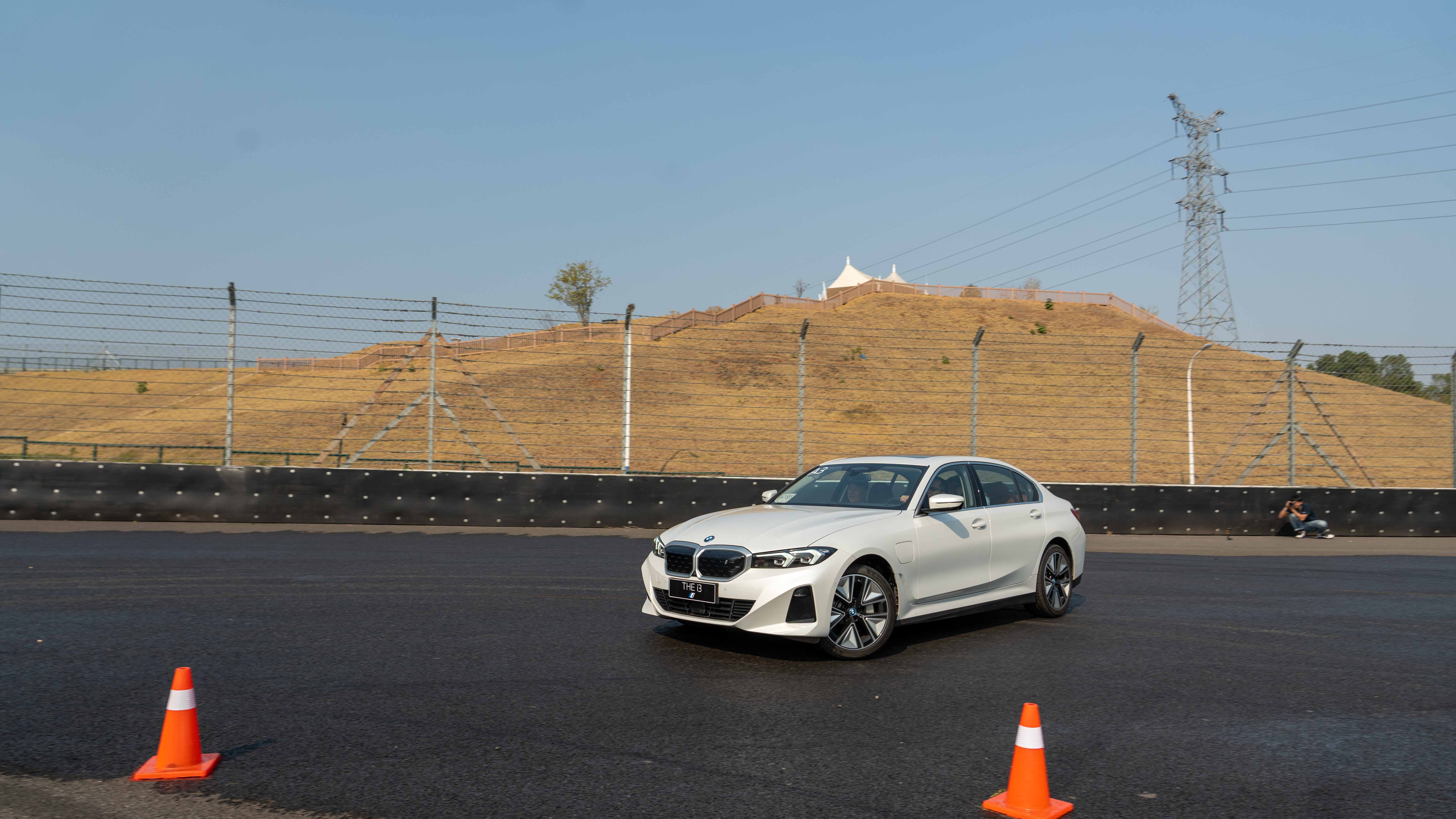 # Electric age, BMW retains the legacy of drifting
# Electric age, BMW retains the legacy of drifting
In the electric age, BMW retains the legacy of drifting. To be honest, drifting an electric car is far more challenging than drifting a gasoline-powered vehicle. Although the powerful torque output easily breaks the grip of the front wheels, the sudden burst of torque when stepping on the accelerator makes delicate control of power extremely difficult. Under the guidance of the coach, the i3 spun around the pole like a top. However, compared to gasoline-powered models, when it comes to drifting, the i3 has this feature: easy to initiate the drift, difficult to maintain the circular trajectory.
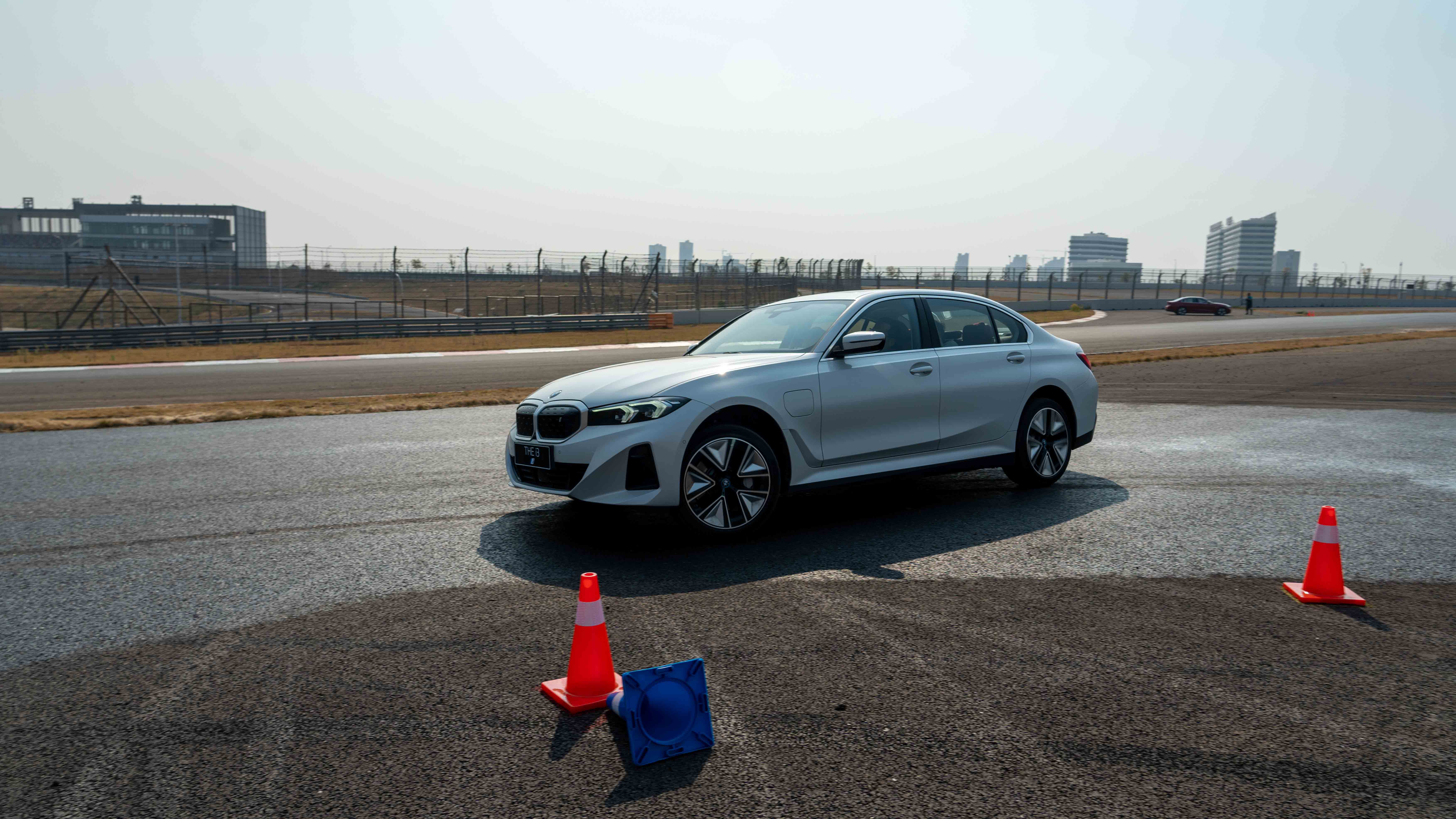
In my opinion, this kind of performance is more of a symbolic significance: the electric BMW still inherits the legacy of rear-wheel drive and drifting ability in the electric age, which is also a symbol of driving pleasure in a narrow sense.
A review of the exterior and interior
Not long ago, my colleague Jiang Xiaohei had a city driving experience with the i3, and he gave a detailed interpretation of the exterior and interior of the i3. Interested friends can click on the link below to view it: 3 series + pure electric, surpassing oneself or a powerful competitor?. Here we will briefly review it.
Exterior
The biggest factor that people call the BMW i3 a “gas-to-electric” vehicle is that the i3’s body design is highly consistent with the gasoline-powered 3 Series (G28), with slight improvements in length, width, height, and wheelbase compared to the gasoline version. The front bumper has not adopted the newest style of the mid-term facelift of the 3 Series, which is similar to the M package of the early version.
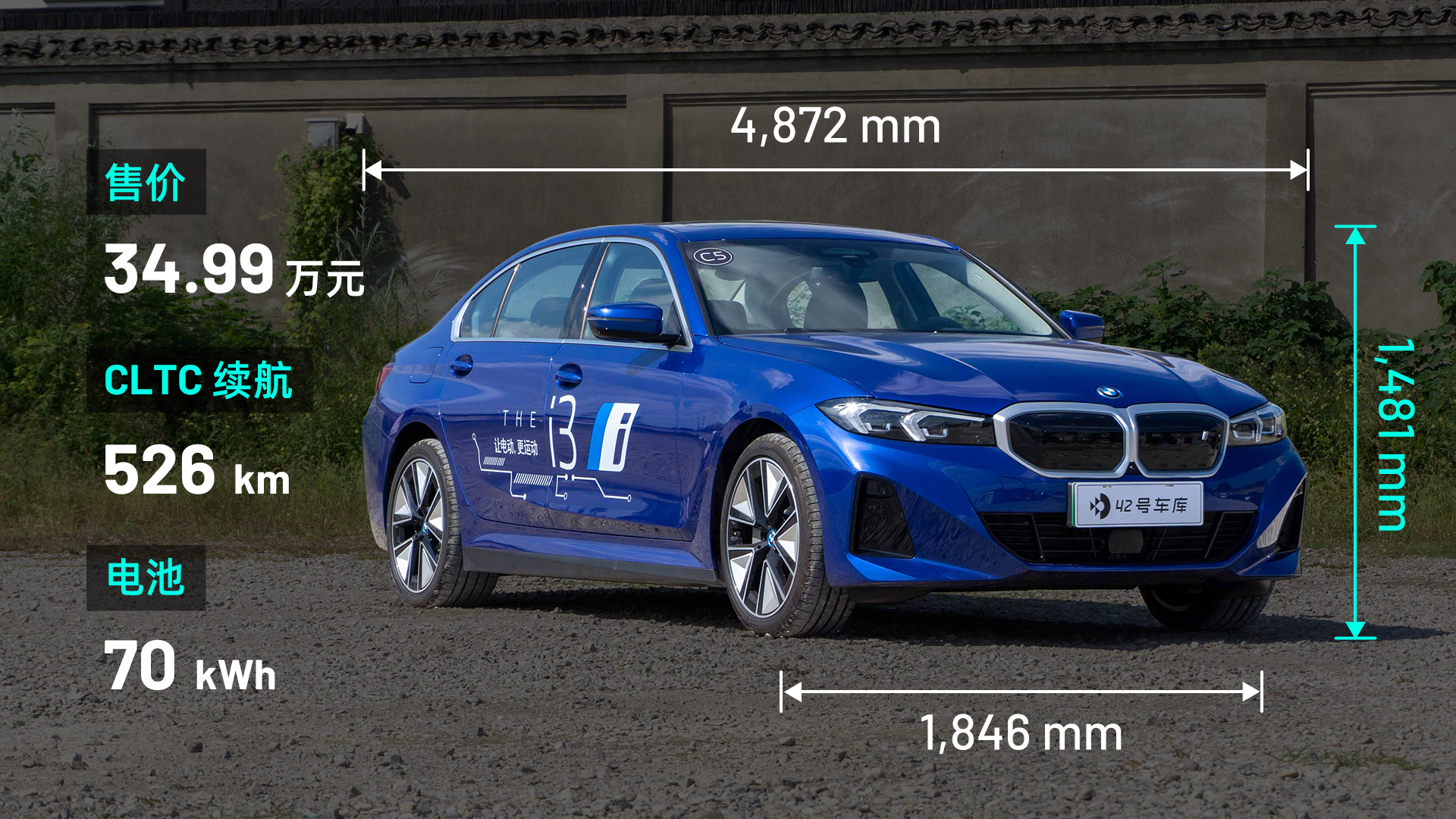 In terms of headlight design, the i3 is consistent with the mid-term facelifted 3 Series, featuring the latest inverted L-shaped daytime running light design. Among numerous BMW models, it is highly recognizable and can be immediately identified as the latest BMW 3 Series when driving on the road.
In terms of headlight design, the i3 is consistent with the mid-term facelifted 3 Series, featuring the latest inverted L-shaped daytime running light design. Among numerous BMW models, it is highly recognizable and can be immediately identified as the latest BMW 3 Series when driving on the road.
In terms of the side view of the car body, the i3 has no significant difference from the long-wheelbase 3 Series. The main distinguishing points are the aerodynamic vortex generators on the front fenders and the decorative plates below the side skirts. These are the differences in vehicle design brought about by the pure electric version of the 3 Series.
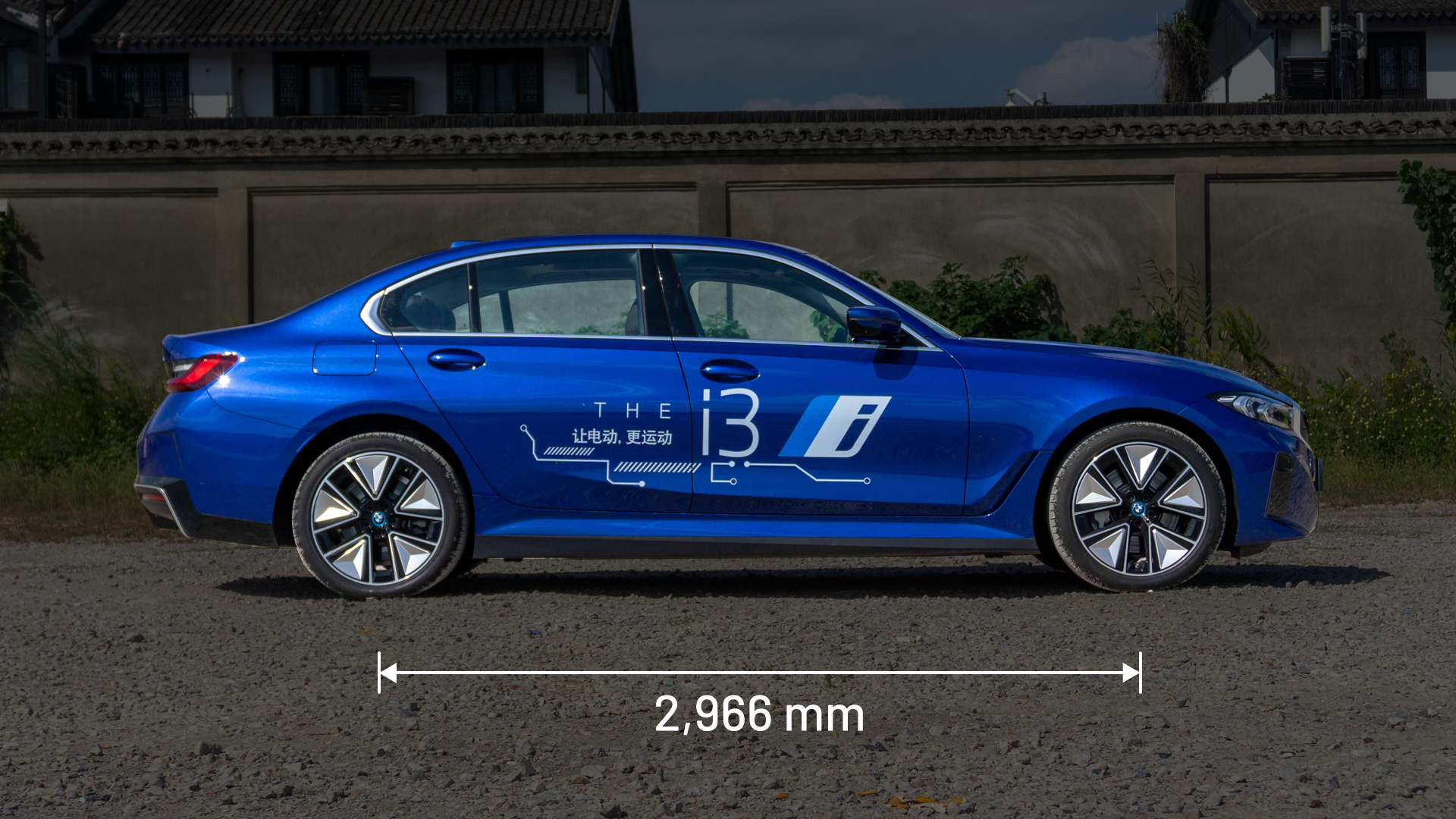
The 19-inch aerodynamic dual-tone wheels have a better appearance compared to the 18-inch ones and make the entire car look fuller. However, the optional price for this set of wheels is 14,300 yuan.
The matching tires are Yokohama ADVAN Sport V107, with front size 225/45 R19 and rear size 245/40 R19, which is more biased towards performance and handling.
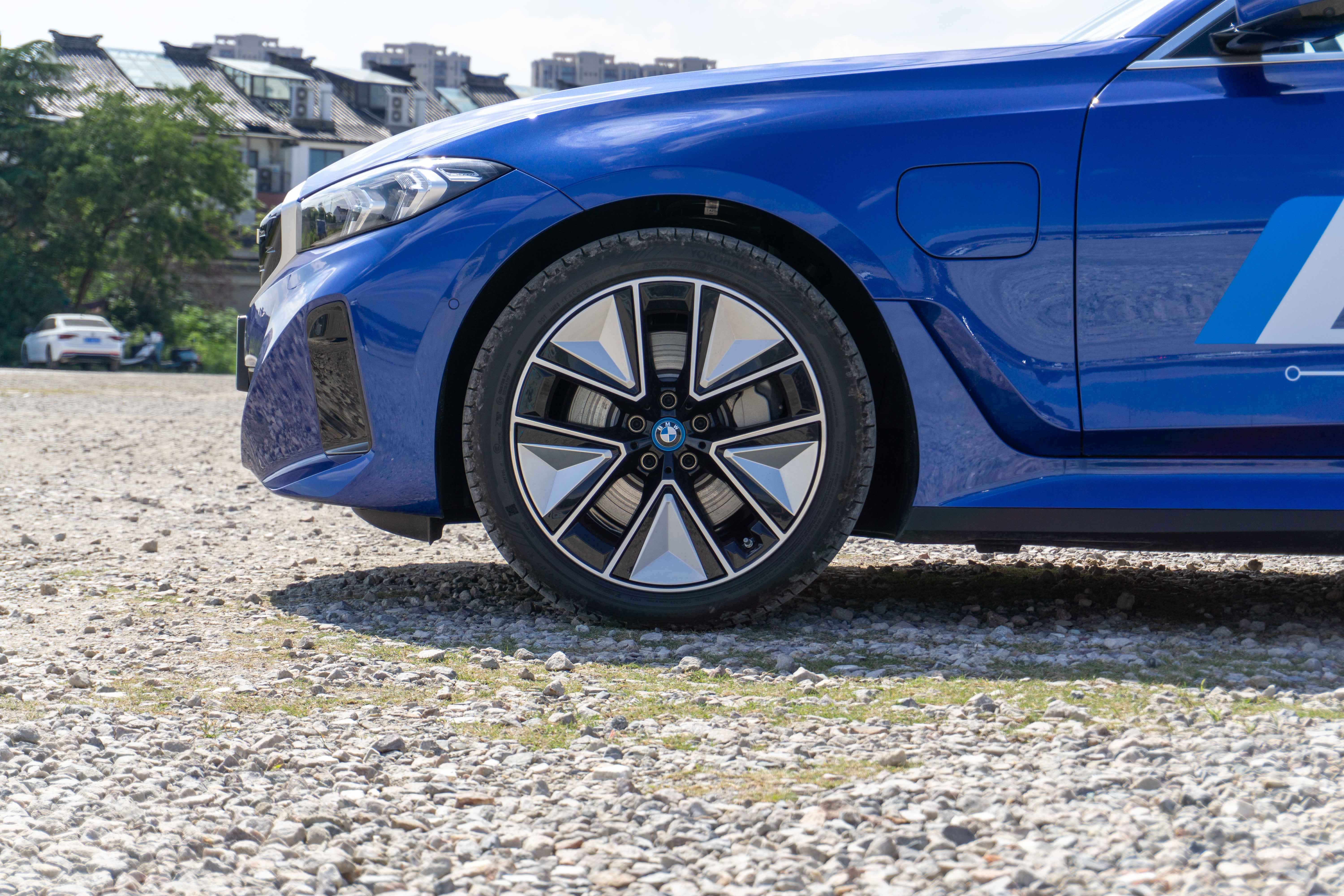
In addition, the BMW i3 has a plastic decorative plate below the side skirt, which the fuel version of the 3 Series does not have. Its main function is to cover the thickened body. The i3 has an additional 70 kWh battery pack on the basis of the fuel car. In order to avoid affecting the original structure of the car, the bottom can only be thickened to hold more batteries.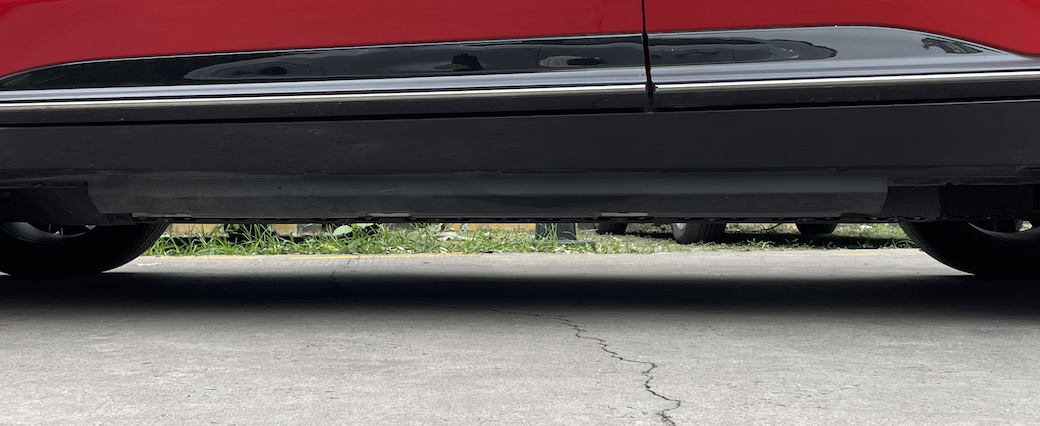
On the tail design, the BMW i3 still maintains the overall style of the 3 Series, with two very large diffuser designs on the rear bumper, which is a significant difference from the fuel-powered 3 Series.
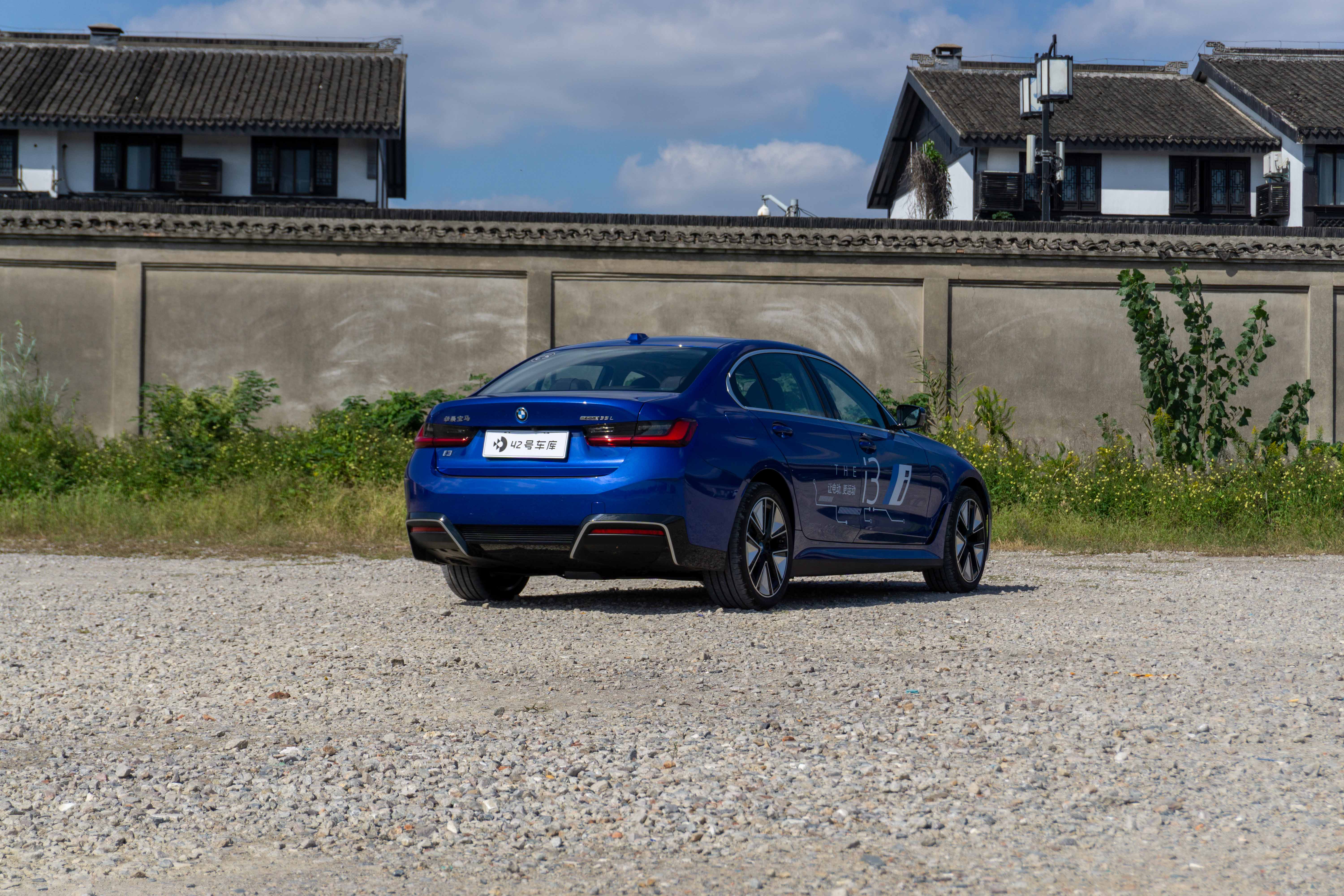
With the large diffuser design, the i3 looks especially sporty, and the vehicle’s tail appears particularly wide and sturdy.
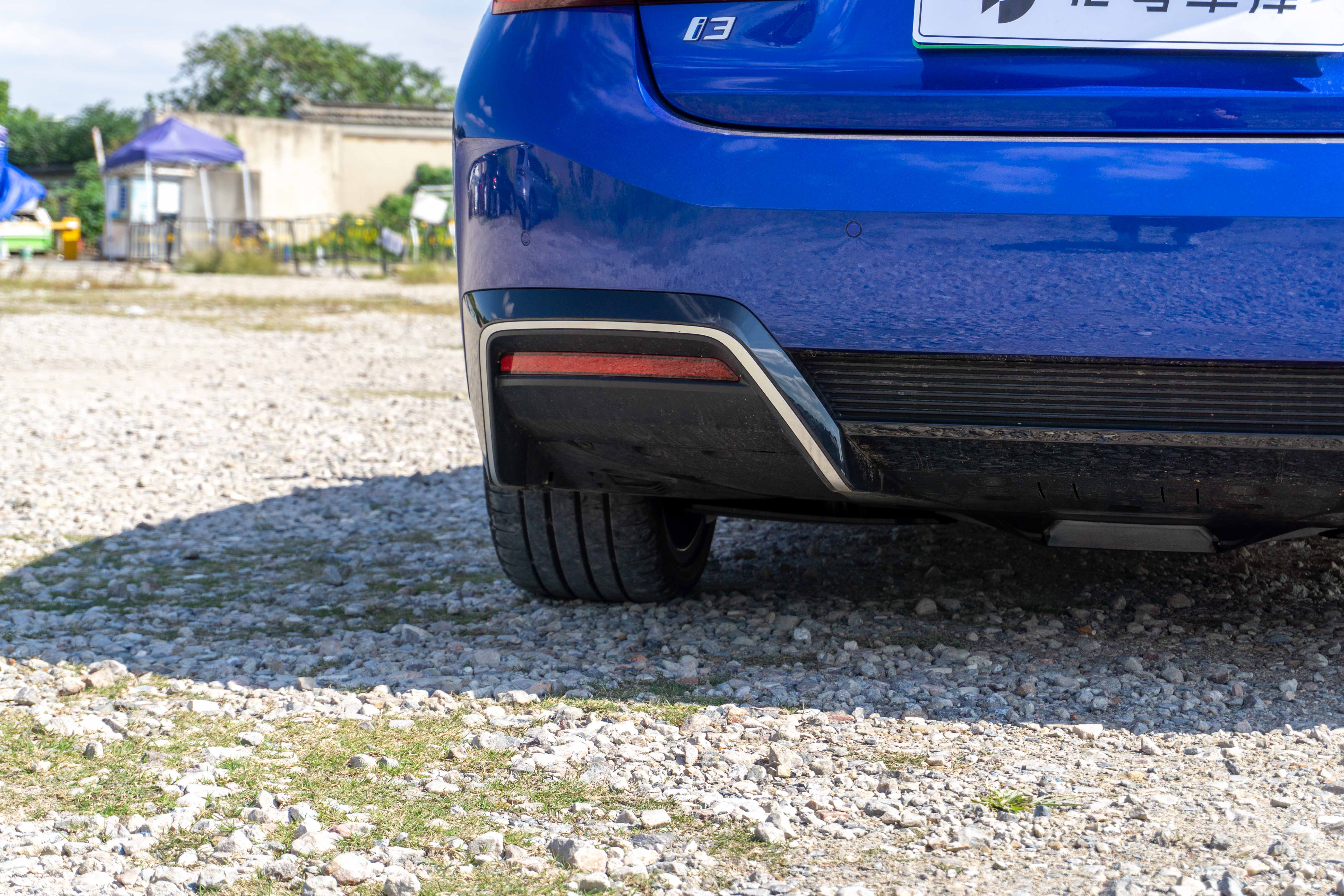
Overall, in terms of appearance, the i3 does not deviate from the overall design of the 3 Series. As a pure electric version of the 3 Series, the i3 has made improvements in many details of body design specifically for electrification, especially in aerodynamics, with a lot of careful consideration on the foundation of the traditional fuel-powered car. Although not as stunning as the first-generation i3, adopting the current design of the 3 Series is not bad, and it is still the appearance design that Bimmer enthusiasts like.
Interior
Sitting in the cabin of the BMW i3, it can be described as “nothing could be more familiar”, which is consistent with the mid-term facelifted 3 Series. It also adopts the currently popular combination of a 12.3-inch LCD instrument panel and a 14.9-inch central control screen, and this screen has a certain curvature, with the central control screen slightly tilted towards the driver side, making it more convenient for the driver to perform touch operations.
 # BMW’s 12.3-inch LCD instrument panel features a simple interface. On the left, it displays the vehicle speed, while on the right, it shows the power output/regeneration percentage. When the driving assistance is activated, the speedometer in the center moves to the left, and the center becomes a visualization of the driving assistance. The driver can easily obtain various driving information while driving.
# BMW’s 12.3-inch LCD instrument panel features a simple interface. On the left, it displays the vehicle speed, while on the right, it shows the power output/regeneration percentage. When the driving assistance is activated, the speedometer in the center moves to the left, and the center becomes a visualization of the driving assistance. The driver can easily obtain various driving information while driving.
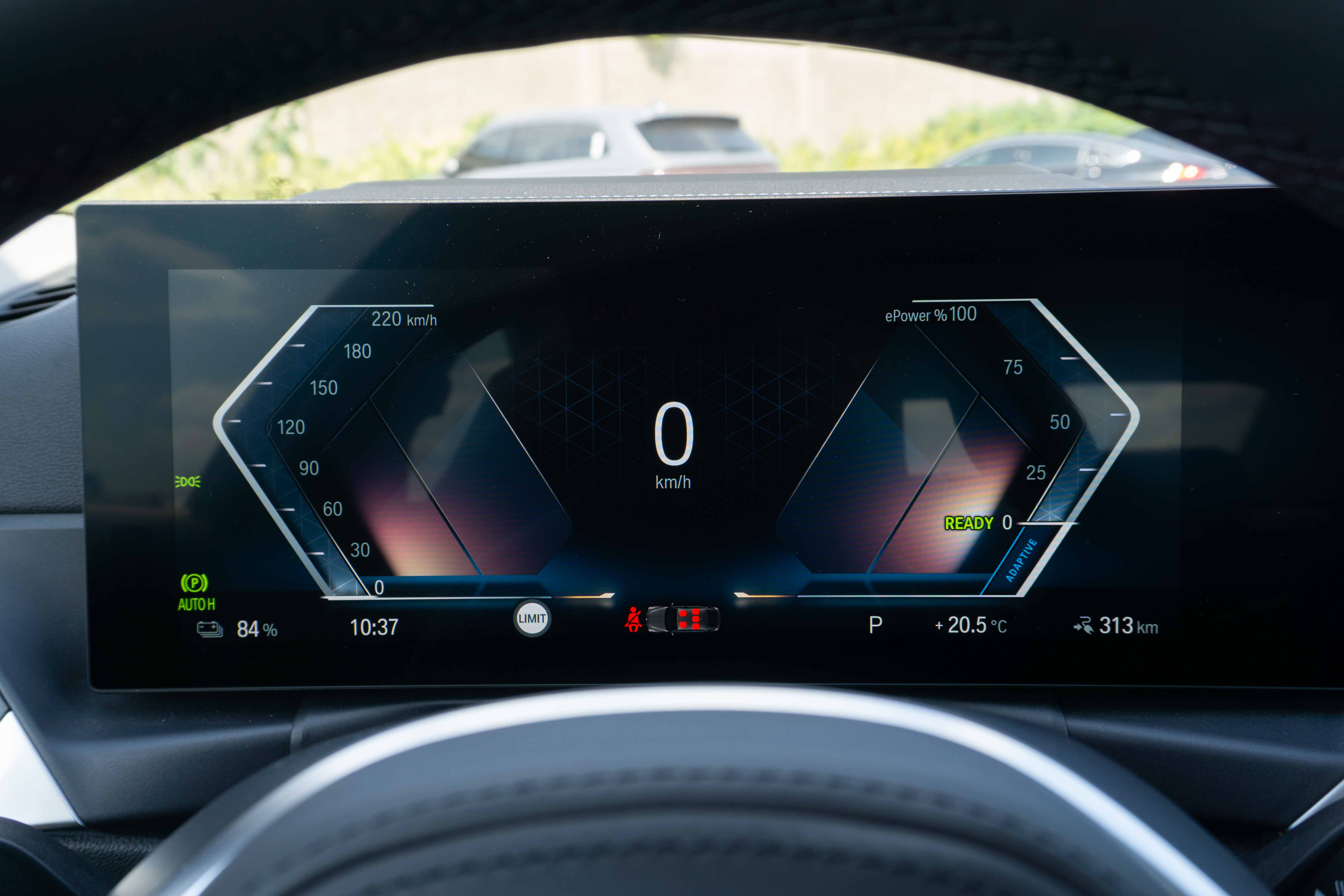
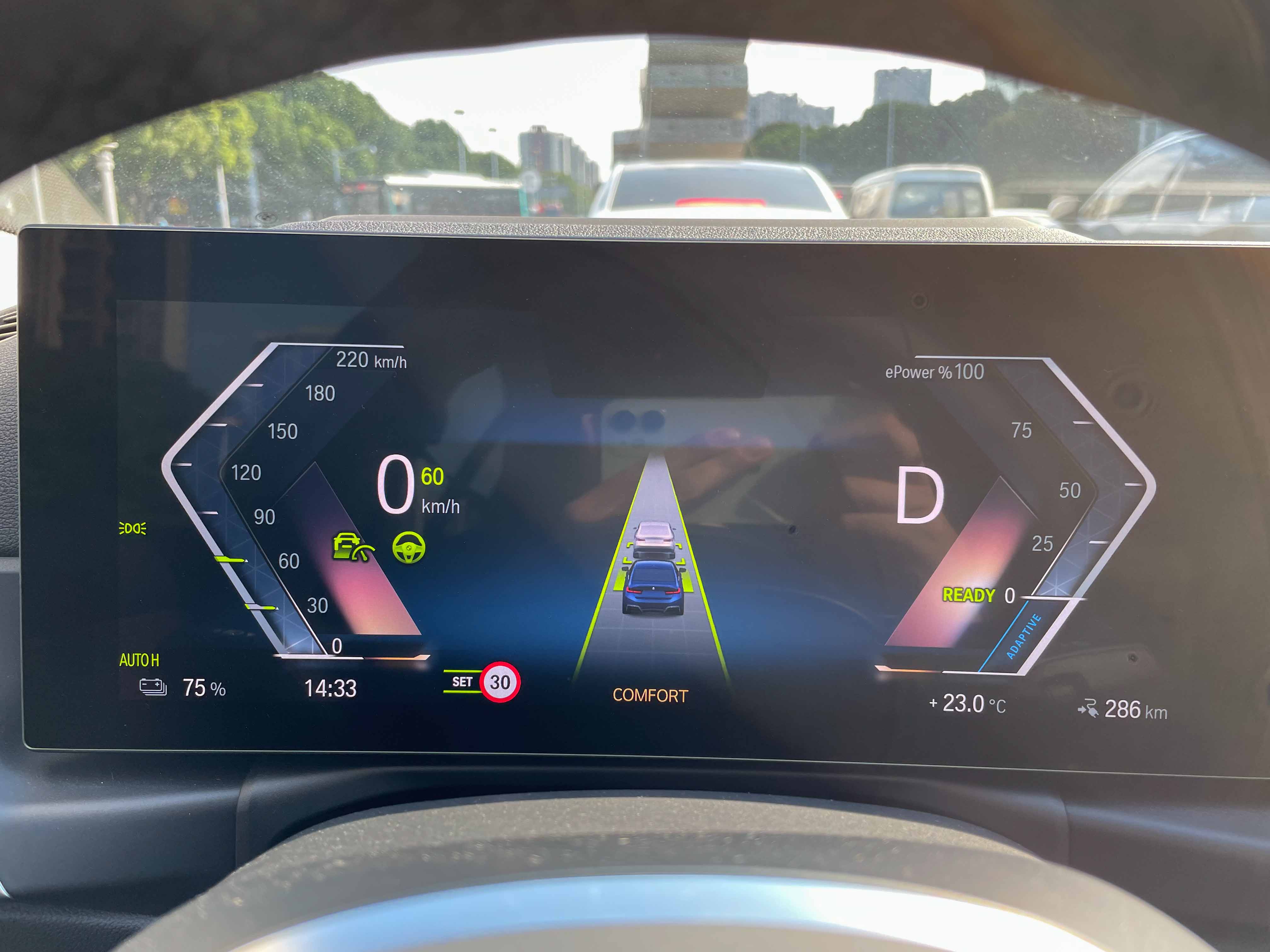
The BMW i3 is the first to use the iDrive 8 system on this 14.9-inch central control screen. The system has many localized applications such as QQ Music, Himalaya, and WeChat.
However, one downside is that BMW has combined the vehicle’s settings and application apps, making them somewhat cluttered. If you want to find a specific vehicle setting, it takes some effort, and the overall logic of the car’s machine is not particularly user-friendly, requiring some time to learn.
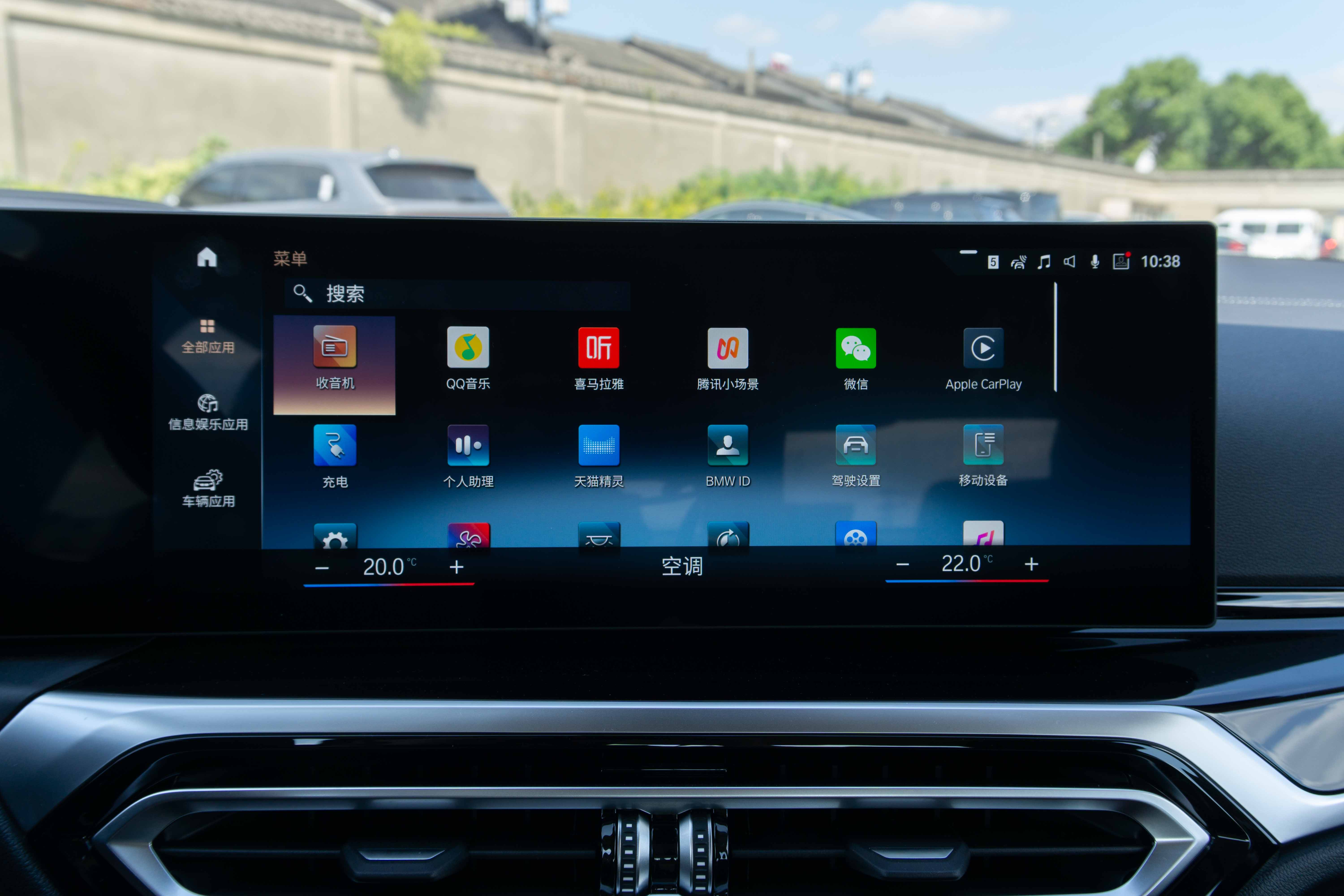
Compared with other new forces at the same price point, the BMW i3’s car machine is not as smooth, and whether it’s dragging the interface or clicking on software, the i3’s car machine performance is not ideal, with visible frame drops. Even using the voice button on the steering wheel to control the WeChat app, there will be a waiting period, which is less efficient than stopping the car and using the phone to reply to a WeChat.
 BMW i3 and the new 3 Series have also removed the physical AC buttons, as well as the classic 8 shortcut keys, which is a common point of criticism among BMW fans. Fortunately, the voice command on the i3 is still functional, and the system can quickly respond to commands and perform actions, to some extent compensating for the loss of physical buttons.
BMW i3 and the new 3 Series have also removed the physical AC buttons, as well as the classic 8 shortcut keys, which is a common point of criticism among BMW fans. Fortunately, the voice command on the i3 is still functional, and the system can quickly respond to commands and perform actions, to some extent compensating for the loss of physical buttons.
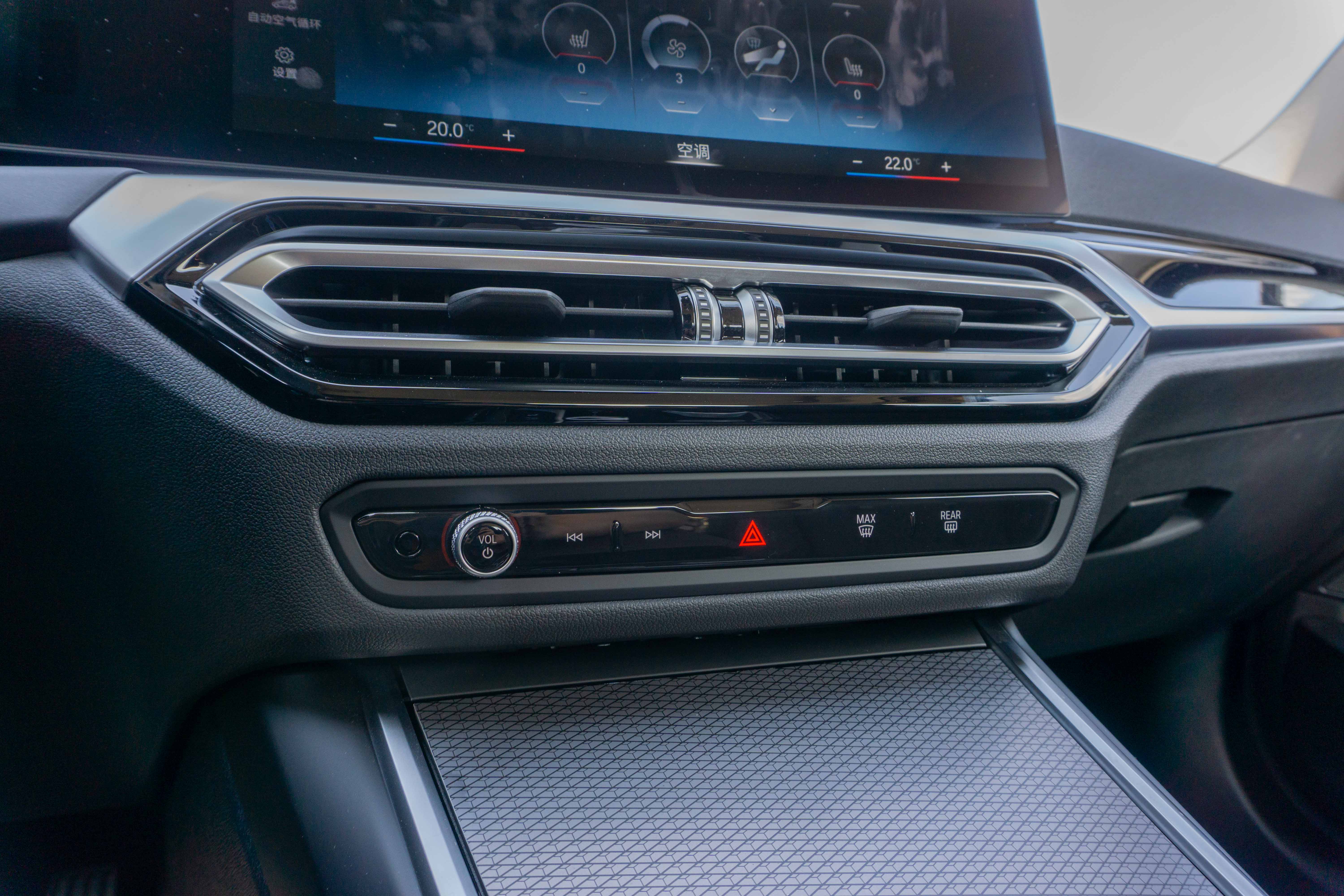
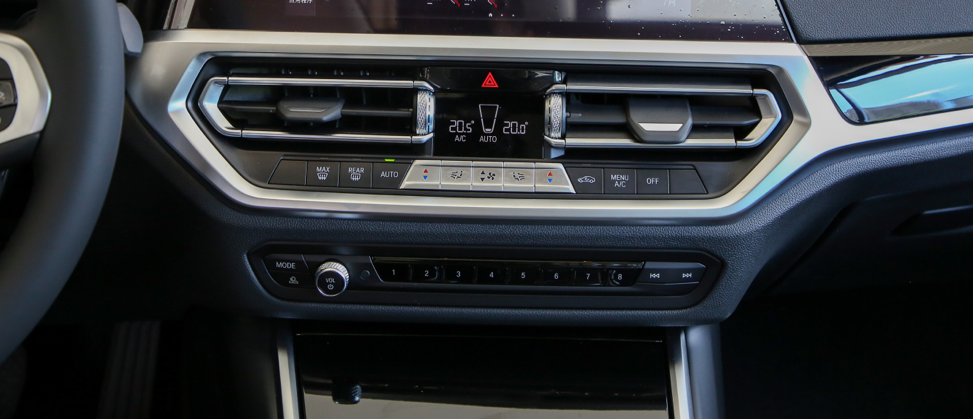
For those who are familiar with BMW, quick operations can still be performed through the control panel’s scroll wheel and buttons. The logic and operations are in line with BMW’s E and F series, and even for old car owners, there is almost no additional learning cost using this set of scroll wheel and physical buttons.
The HUD can display a wealth of information during driving, covering basic information such as vehicle speed, speed limits, navigation, and even traffic cameras. Those who are accustomed to using HUD or pursuing technological innovation may consider adding it as an option.
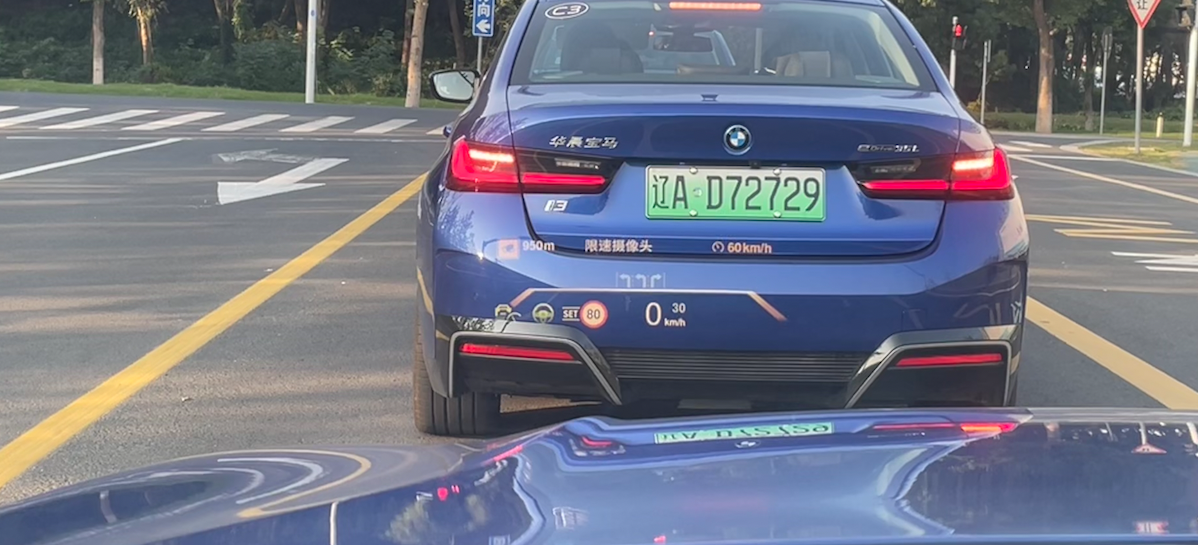
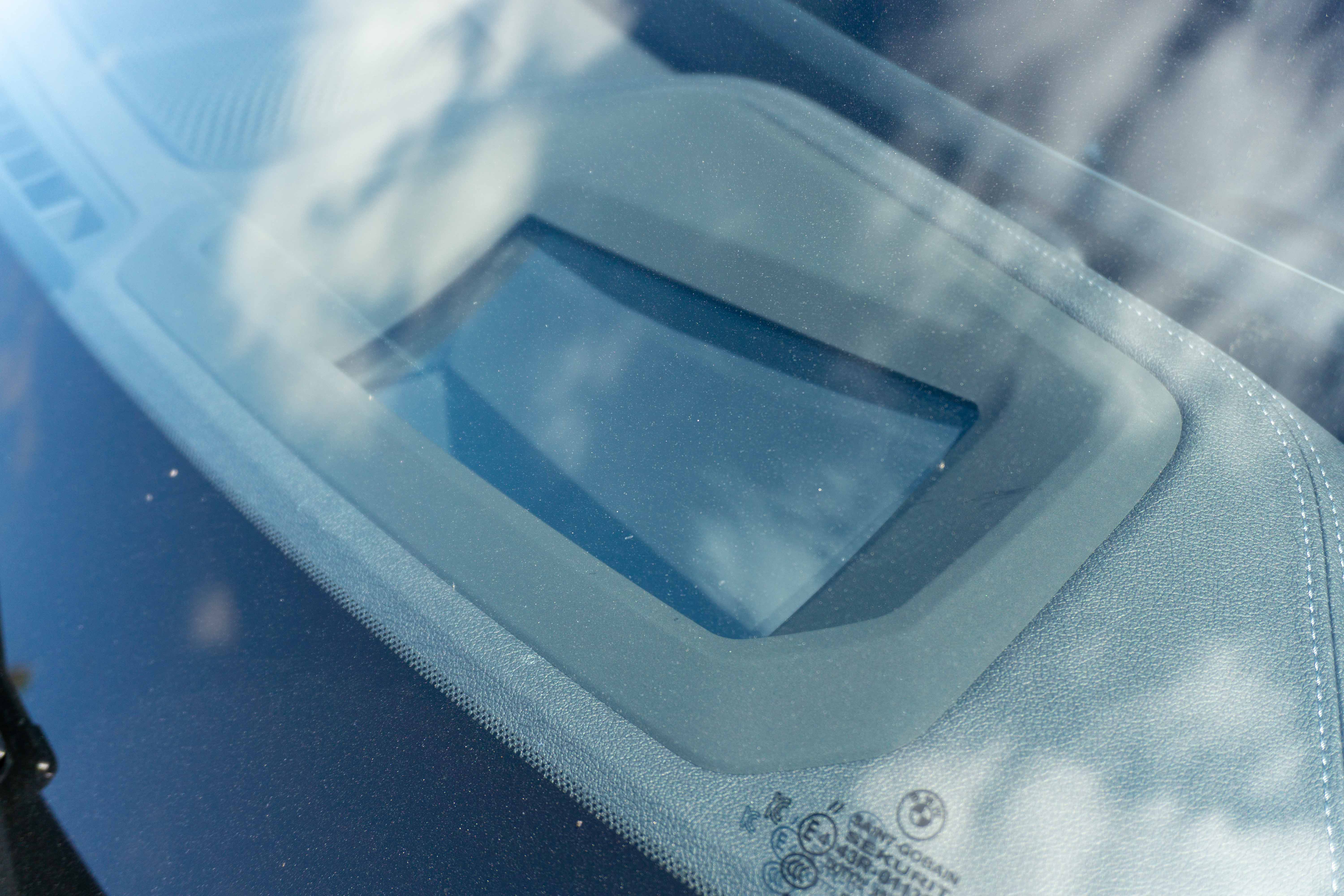
In terms of the cabin, the BMW i3 is still relatively conservative, without too many fancy functions. While attempting to introduce innovative elements, BMW focuses on practicality and provides the driver with a familiar operating experience.In terms of spatial performance, i3 has some improvement in sitting posture compared with fuel-based 3.
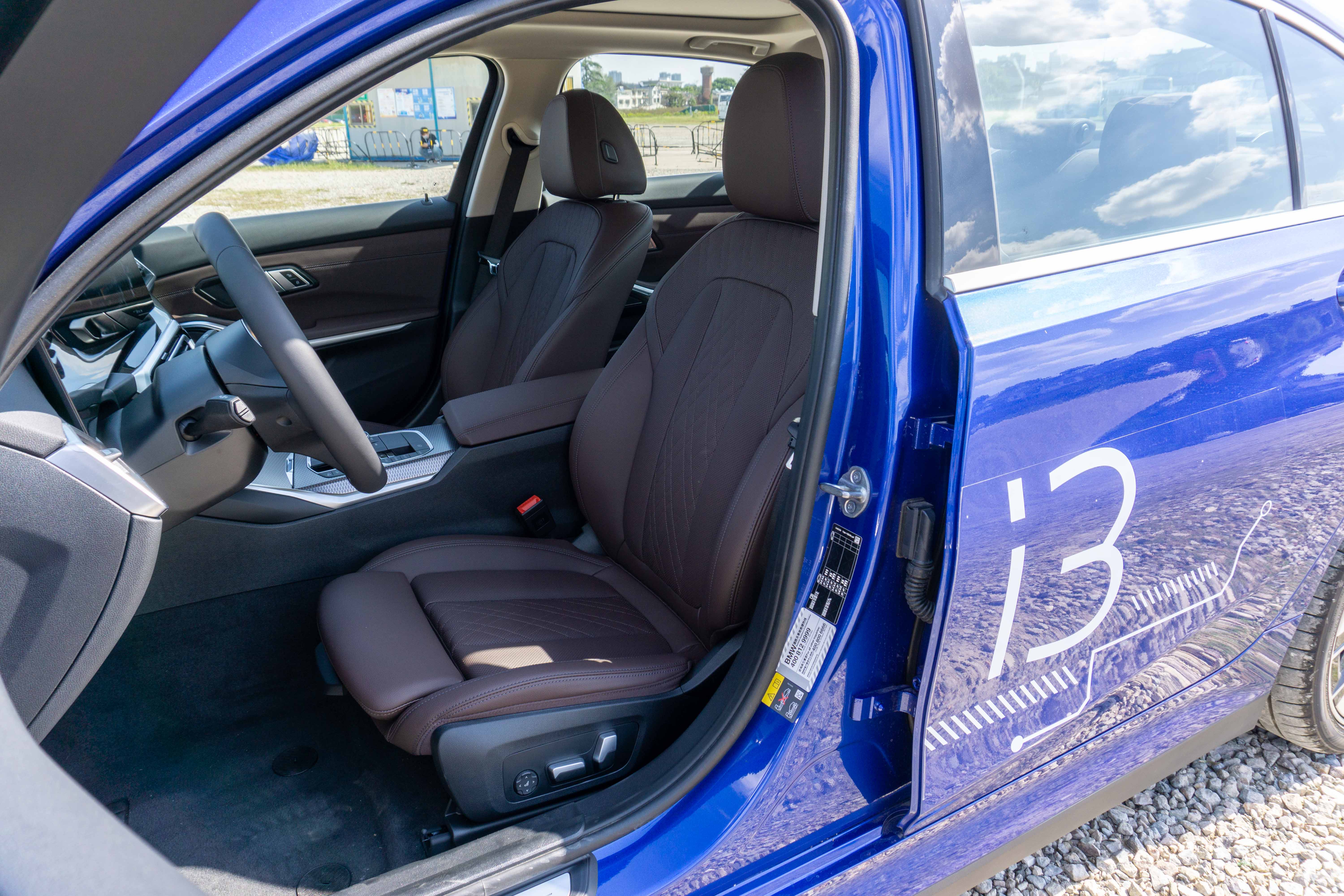
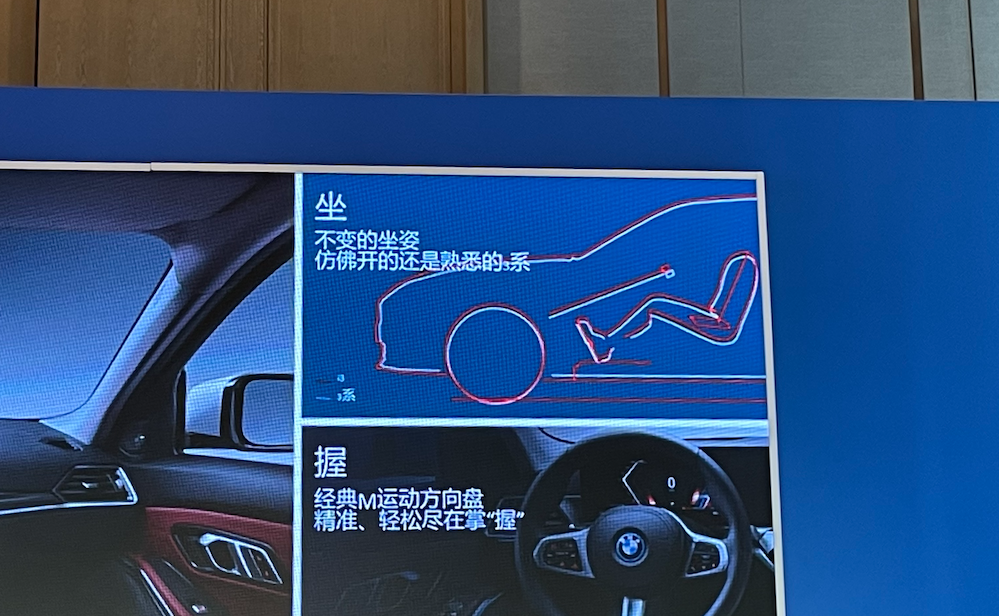
However, in actual experience, the improved sitting posture of i3 is not easy to notice. Sitting in the driver’s seat, the vehicle still feels like a relatively low posture, and the legs can naturally bend and stretch forward.
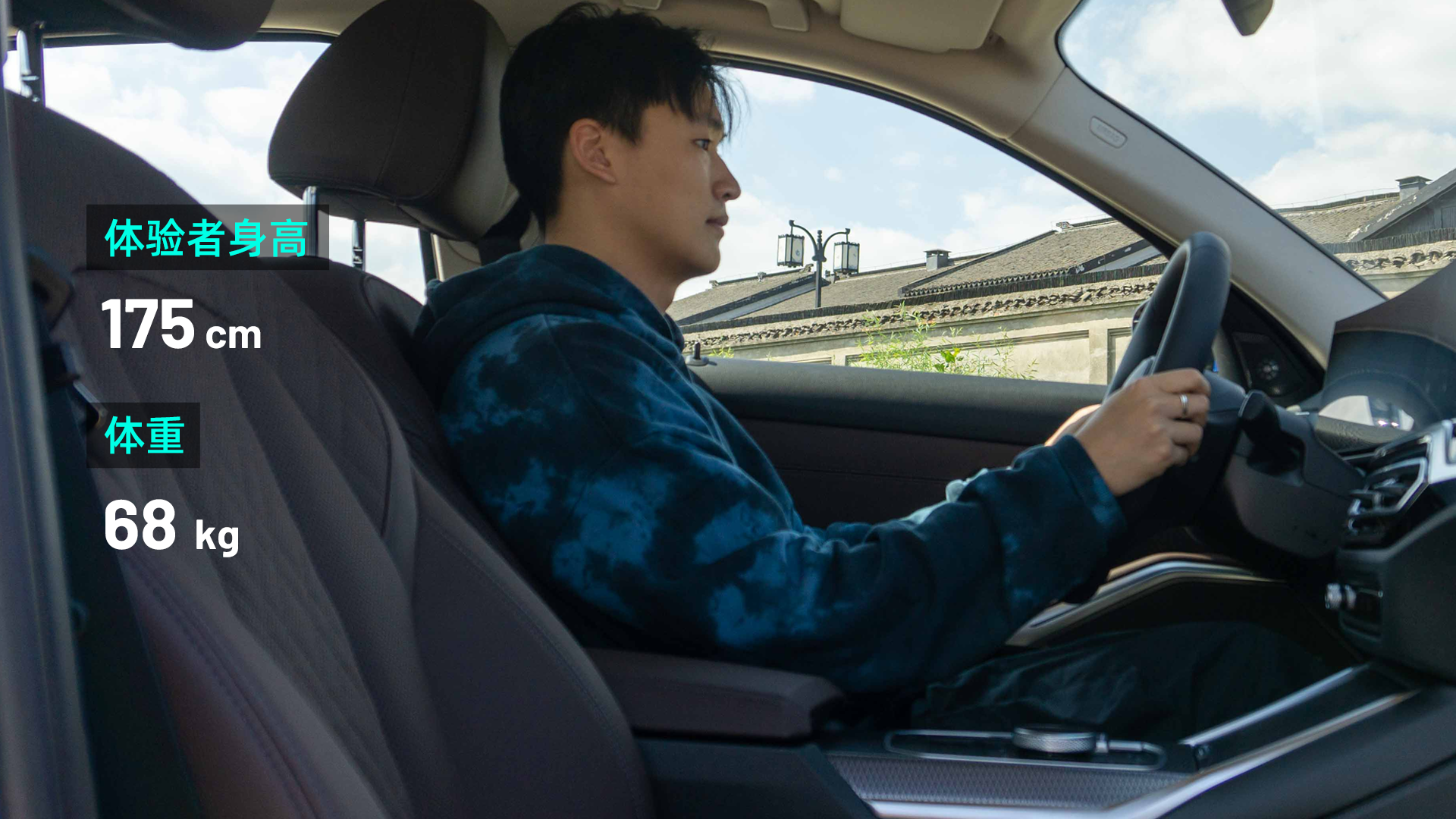
Coming to the rear seats, the legroom and headroom of the BMW i3 have a good performance. As for me, with a height of 175 cm and a weight of 68 kg, under the suitable driving position in front of me, the legroom reaches 2 fists, and the headroom reaches 1 fist. Even taller people sitting in the rear seats will not feel cramped.
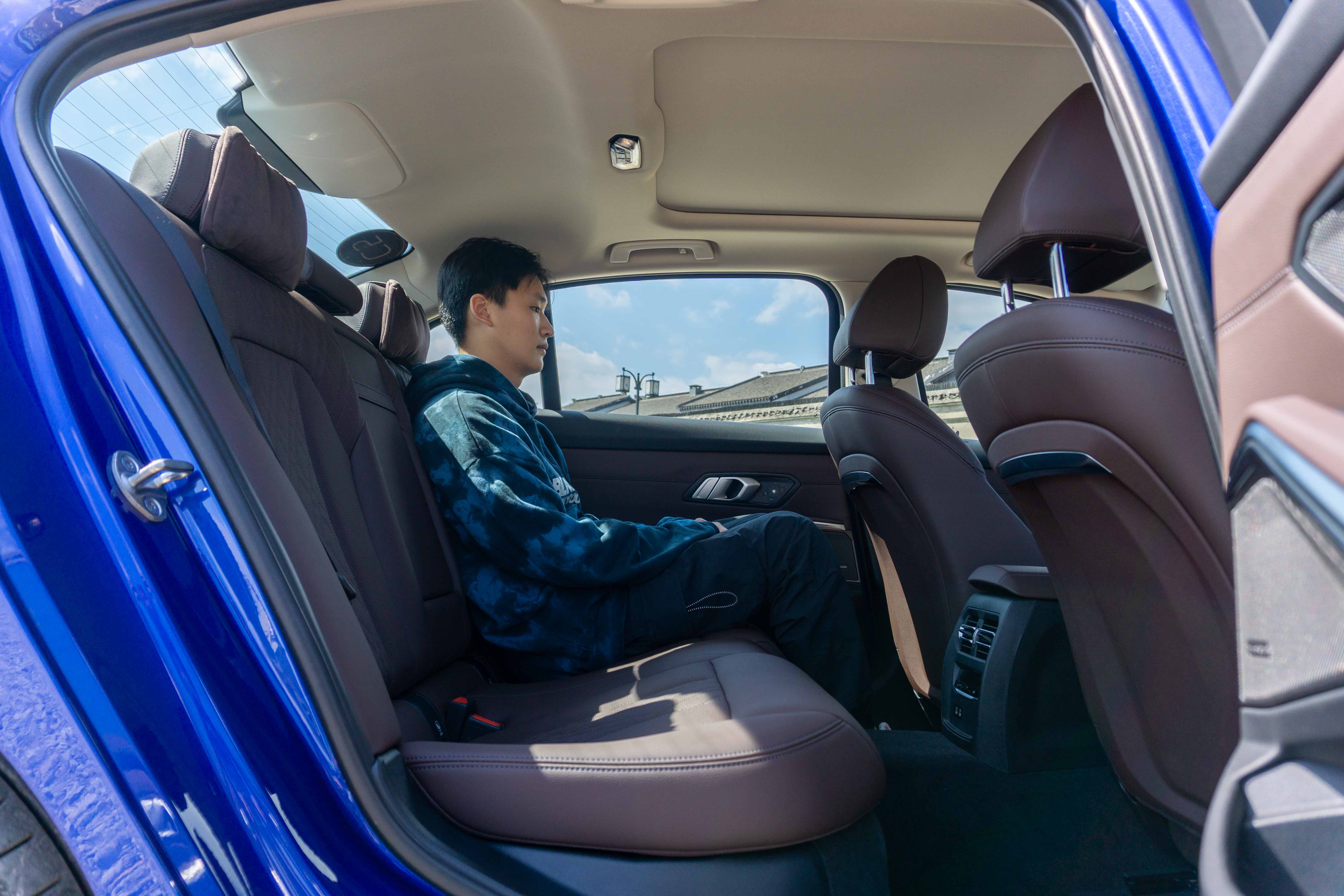
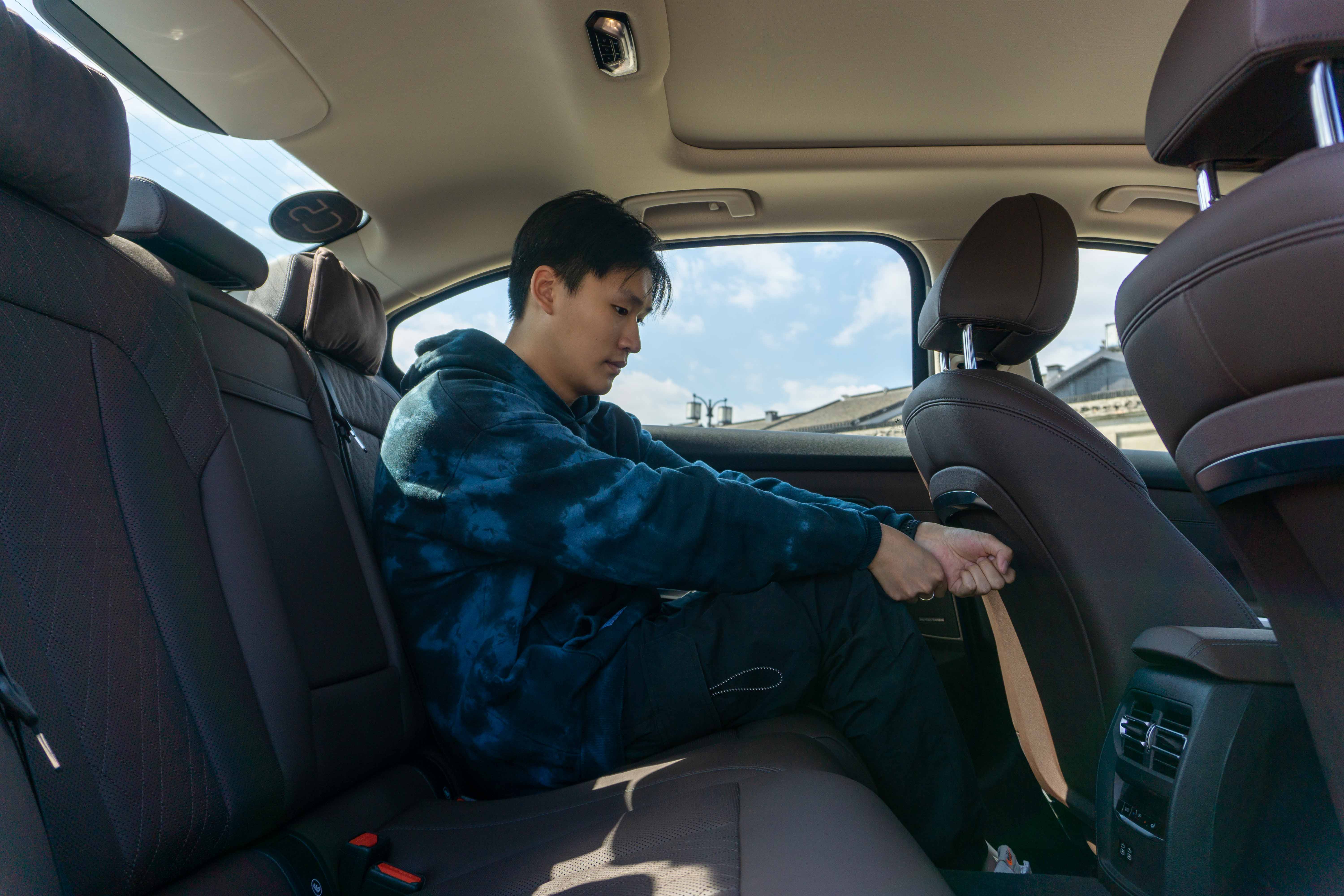
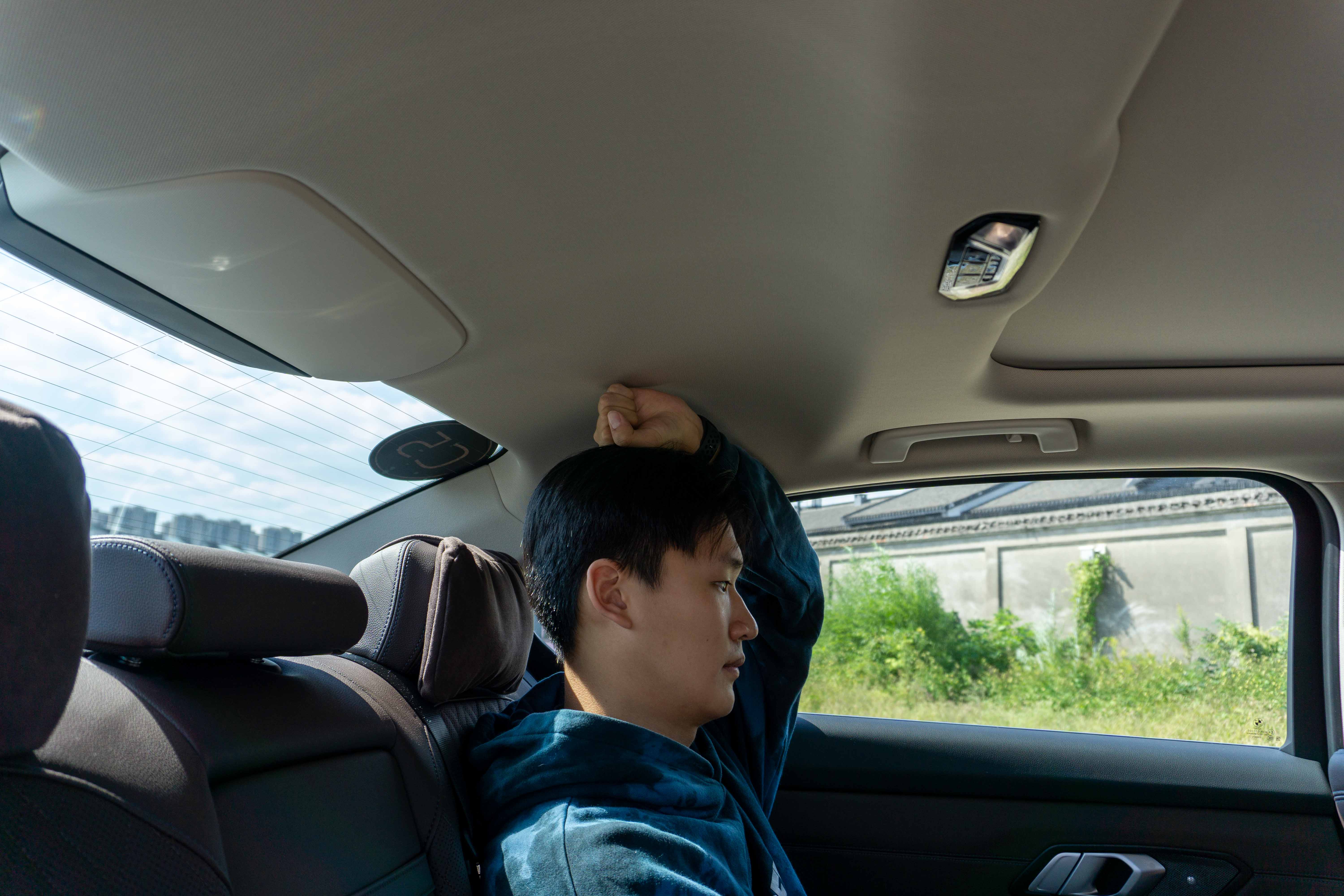
The angle of the rear seat backrest is large, the cushion support is long enough, plus the standard rear comfort headrest, and the positions on both sides are very comfortable to ride in. Even sitting for 3 hours will not cause discomfort.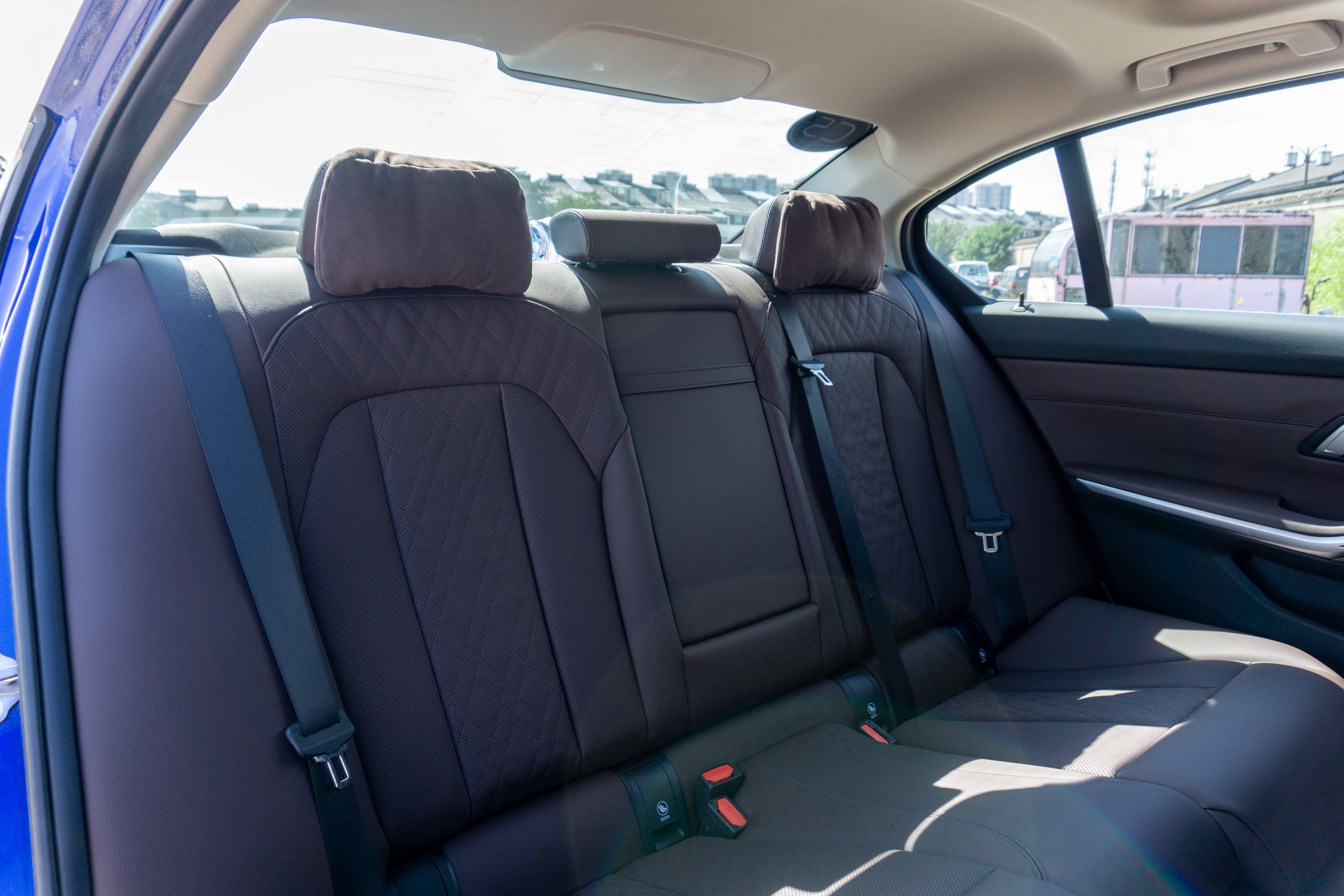
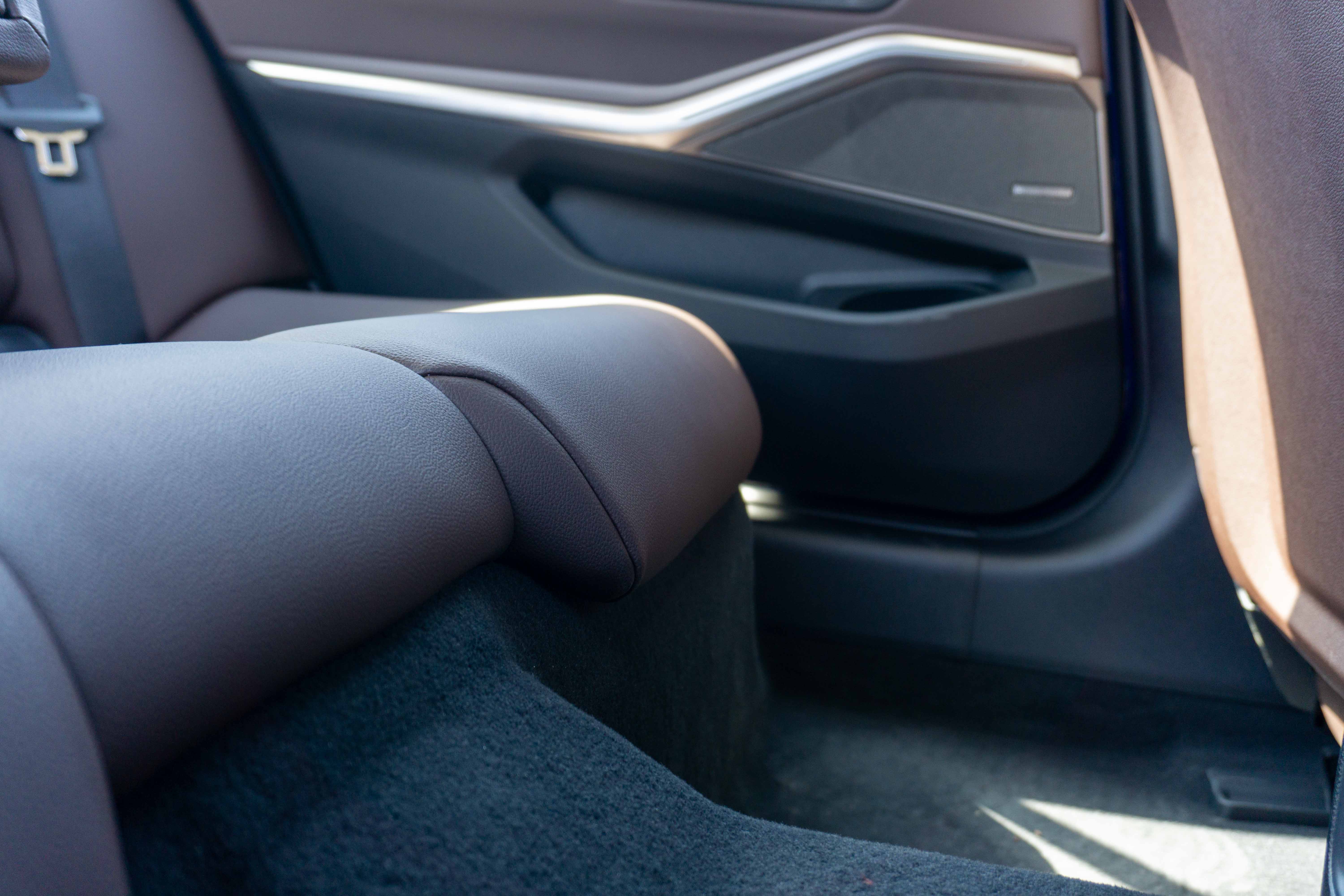
The above conclusions are only applicable to the passengers on both sides of the rear row. Due to the CLAR hybrid platform, the i3 still has a huge drum bag reserved for the drive shaft, but the battery pack is placed where the original 3 Series gearbox and drive shaft were.
The height of this drum bag has exceeded the height of an iPhone 12 with a height of 14.67 cm. The passenger sitting in the middle has to place their legs on both sides and also endure a relatively hard armrest. The riding experience is poor, and the emergency attribute of the rear middle position is greater than the practical attribute.

It is worth mentioning that the cushion filling of the BMW i3 is very thick, with a soft upper sponge and a relatively hard middle and lower sponge, providing wrapping and support while also allowing passengers to sit for a long time without getting tired. The choice of the seat leather surface for the BMW i3 is also a point that I personally like. It is called Sensatec synthetic leather on the official website, which is the leather material that BMW models have always used. Although it feels particularly rough, this leather material is very durable.
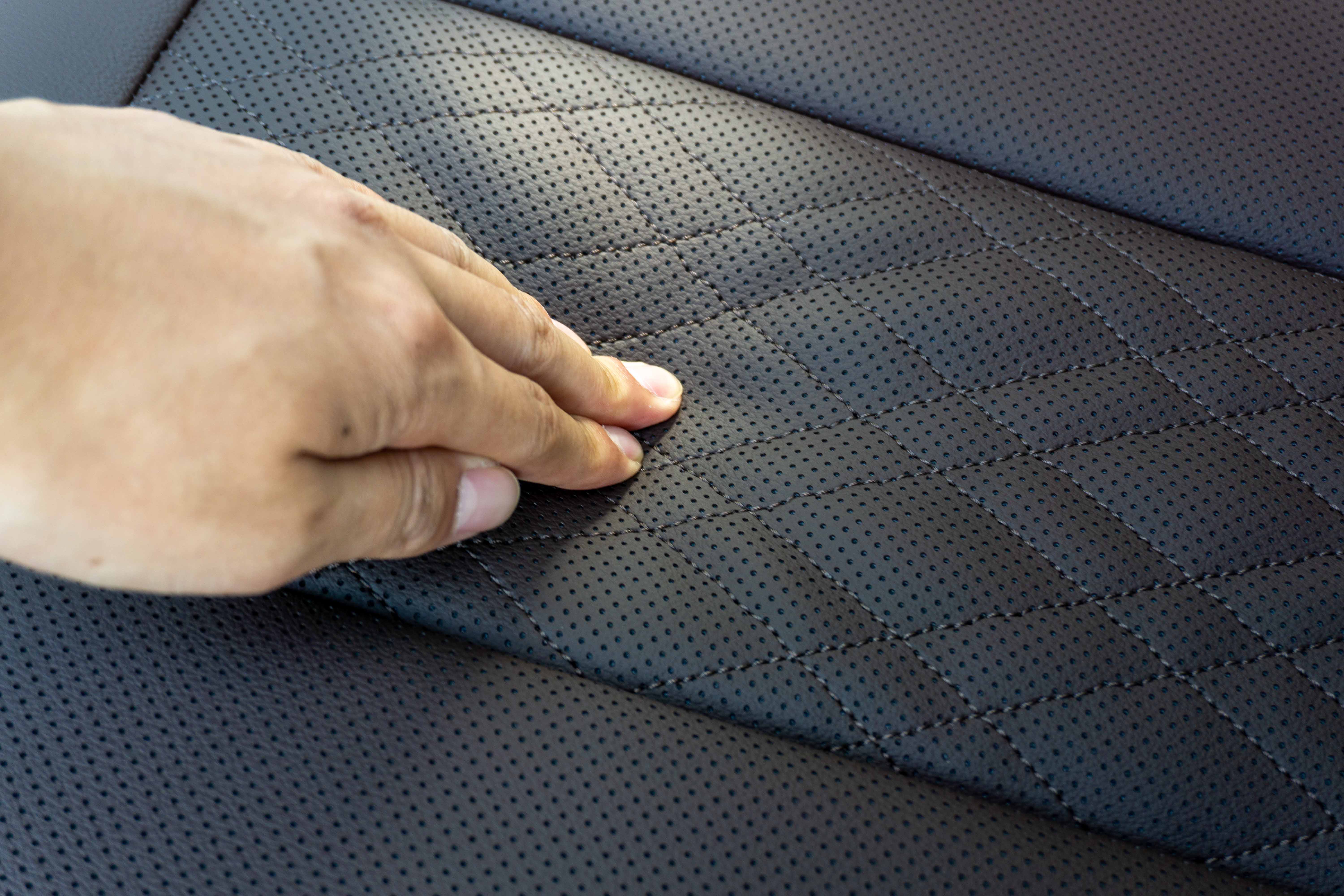
Compared with some pure electric vehicles, the “oil to electric” i3 can ensure head and leg space in the second row. Of course, the huge bump in the middle of the second row is a pain that the i3 cannot avoid.
ConclusionAfter experiencing the i3 on the racetrack, the most impressive thing to me was the car’s foundation in ergonomic design and hardware tuning. From the moment I got into the car, the comfortable seats, lower seating position compared to most electric cars, firm and substantial brake and accelerator pedals, and well-balanced chassis left me with a very good first impression.
The performance of the i3 on the racetrack also proved that its driving experience is not inferior to the fuel-powered 3 Series. On the contrary, the energetic power feedback brought by the electric drive, wider wheelbase, and more advanced rear suspension layout made the handling performance of this car even better than that of the 330 Li. So, without the roar of the B48 engine and the swift action of the 8-speed automatic transmission, is the 3 Series still suitable for young people?
With the abundance of power and handling options available now for electric cars, I would like to leave this question for everyone to decide for themselves. However, what can be said with certainty is that the i3 still retains the quality and luxury that is befitting of a BMW, and its performance on the racetrack is very balanced, stable, and enjoyable.
The previous model named i3 was a groundbreaking creation for BMW. In my opinion, BMW still has great expectations for the G20-based 3 Series. I can confidently say that in fields where BMW excels, no one will be able to surpass them in the coming years.
This article is a translation by ChatGPT of a Chinese report from 42HOW. If you have any questions about it, please email bd@42how.com.
